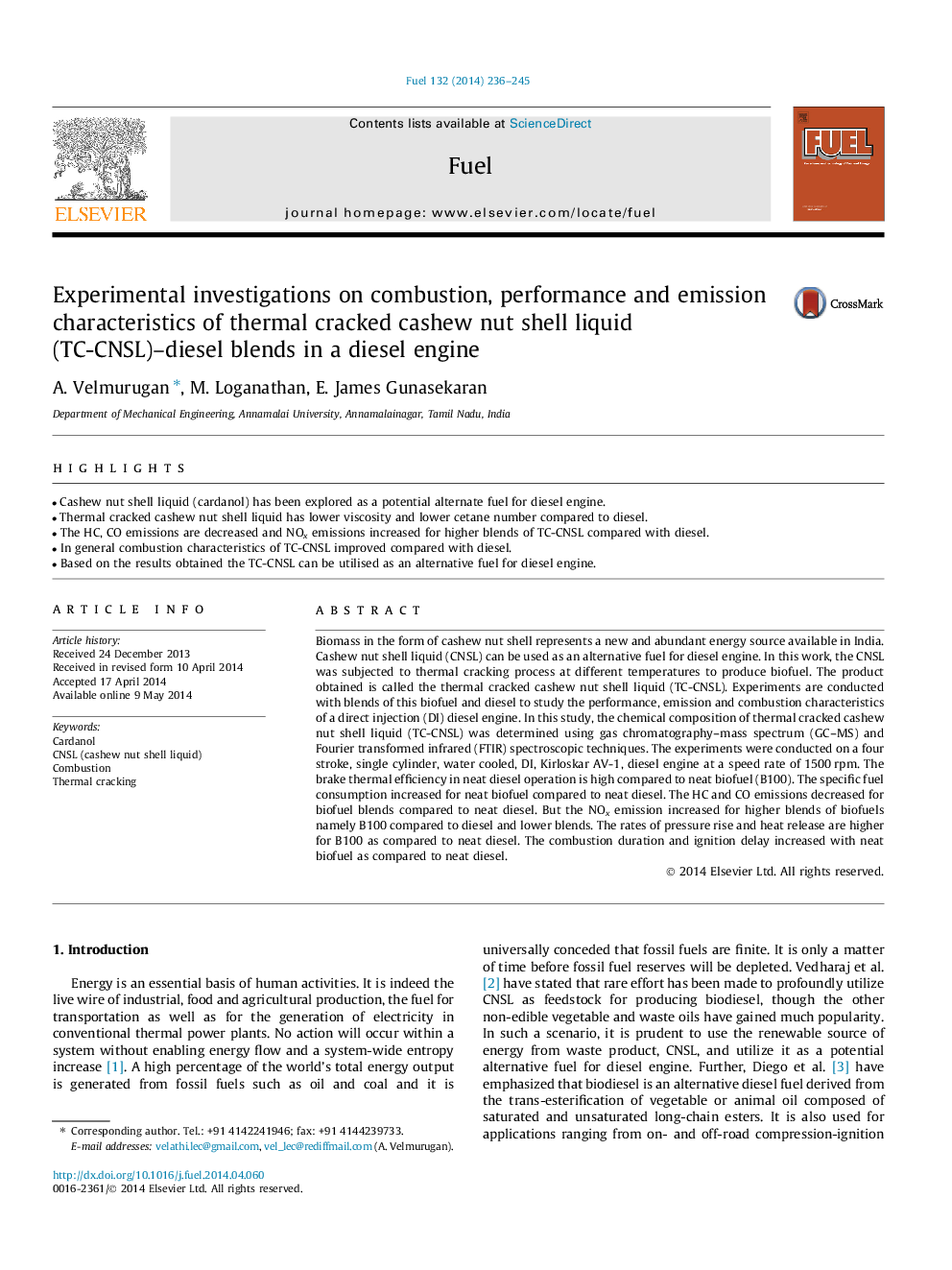| کد مقاله | کد نشریه | سال انتشار | مقاله انگلیسی | نسخه تمام متن |
|---|---|---|---|---|
| 206208 | 461147 | 2014 | 10 صفحه PDF | دانلود رایگان |

• Cashew nut shell liquid (cardanol) has been explored as a potential alternate fuel for diesel engine.
• Thermal cracked cashew nut shell liquid has lower viscosity and lower cetane number compared to diesel.
• The HC, CO emissions are decreased and NOx emissions increased for higher blends of TC-CNSL compared with diesel.
• In general combustion characteristics of TC-CNSL improved compared with diesel.
• Based on the results obtained the TC-CNSL can be utilised as an alternative fuel for diesel engine.
Biomass in the form of cashew nut shell represents a new and abundant energy source available in India. Cashew nut shell liquid (CNSL) can be used as an alternative fuel for diesel engine. In this work, the CNSL was subjected to thermal cracking process at different temperatures to produce biofuel. The product obtained is called the thermal cracked cashew nut shell liquid (TC-CNSL). Experiments are conducted with blends of this biofuel and diesel to study the performance, emission and combustion characteristics of a direct injection (DI) diesel engine. In this study, the chemical composition of thermal cracked cashew nut shell liquid (TC-CNSL) was determined using gas chromatography–mass spectrum (GC–MS) and Fourier transformed infrared (FTIR) spectroscopic techniques. The experiments were conducted on a four stroke, single cylinder, water cooled, DI, Kirloskar AV-1, diesel engine at a speed rate of 1500 rpm. The brake thermal efficiency in neat diesel operation is high compared to neat biofuel (B100). The specific fuel consumption increased for neat biofuel compared to neat diesel. The HC and CO emissions decreased for biofuel blends compared to neat diesel. But the NOx emission increased for higher blends of biofuels namely B100 compared to diesel and lower blends. The rates of pressure rise and heat release are higher for B100 as compared to neat diesel. The combustion duration and ignition delay increased with neat biofuel as compared to neat diesel.
Journal: Fuel - Volume 132, 15 September 2014, Pages 236–245